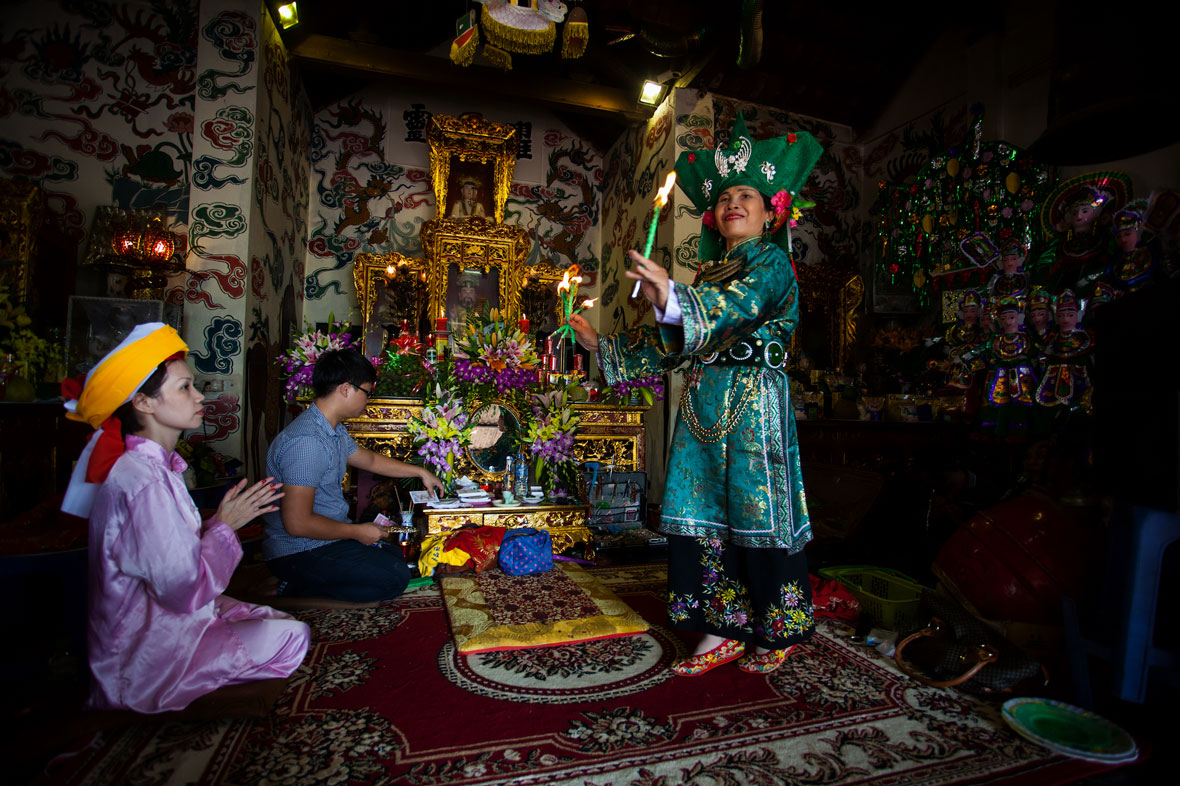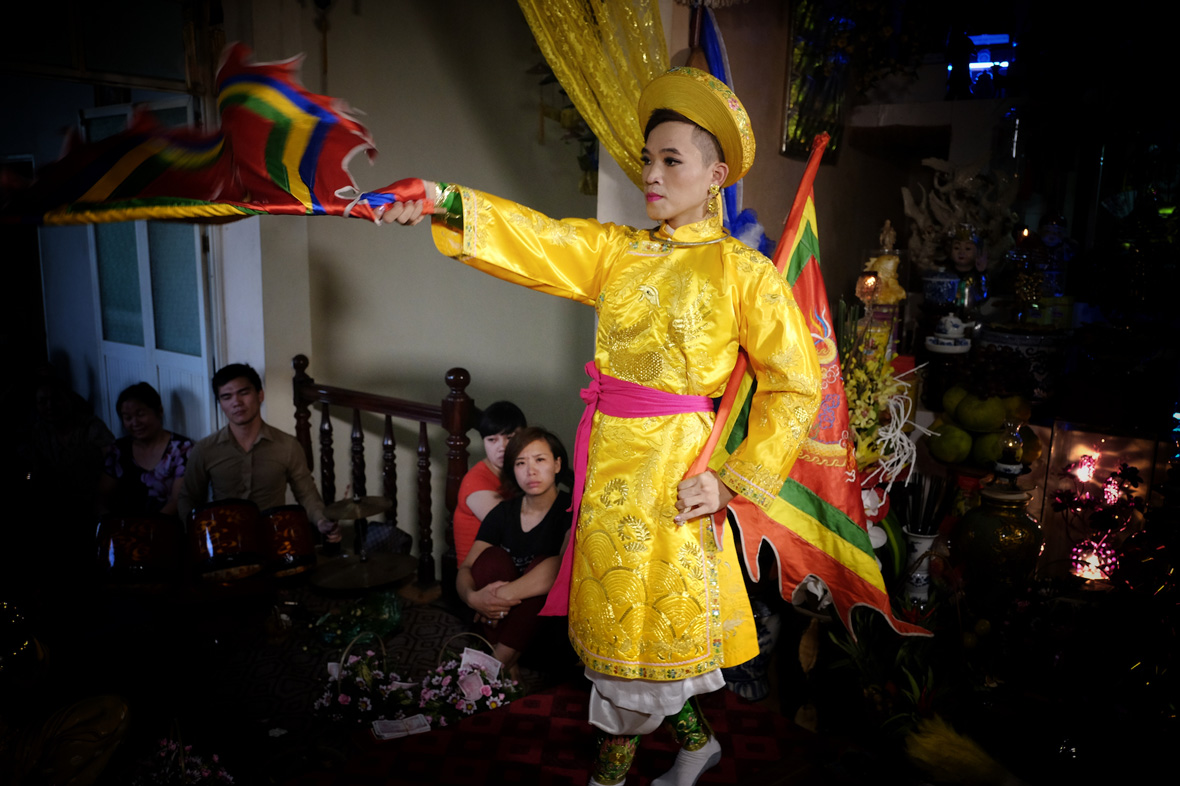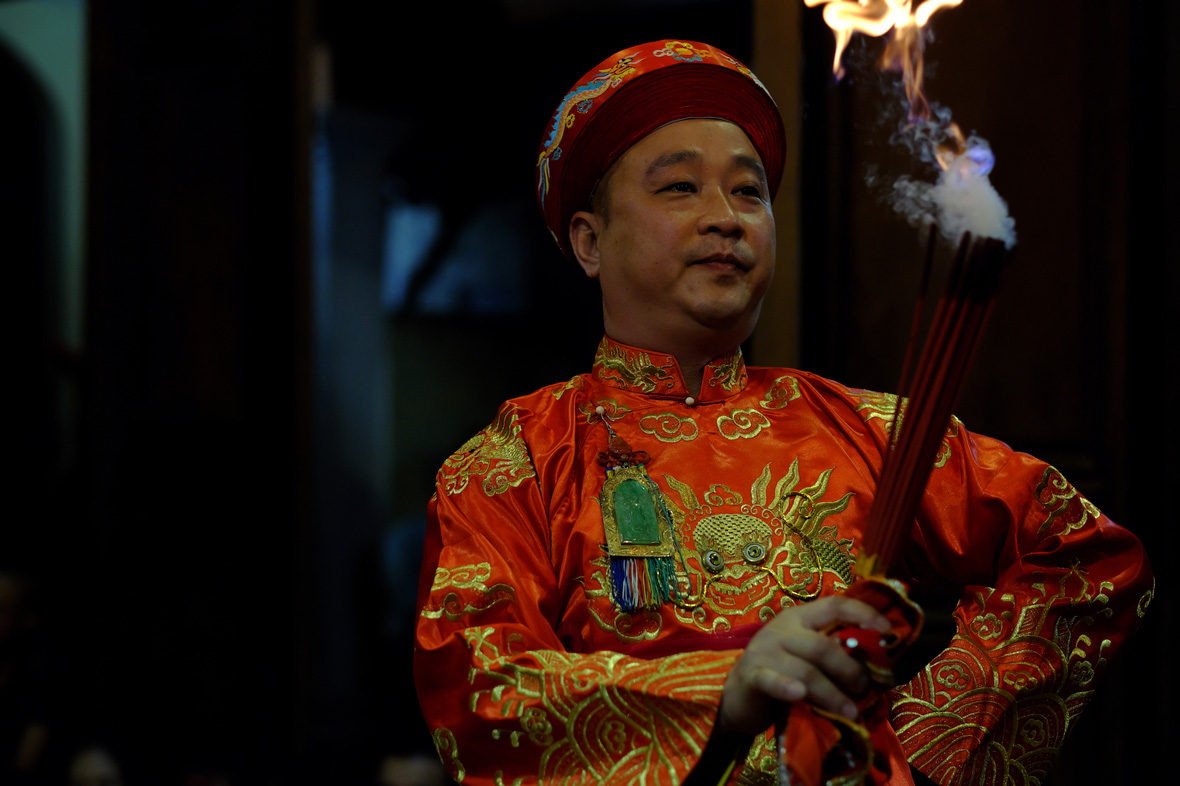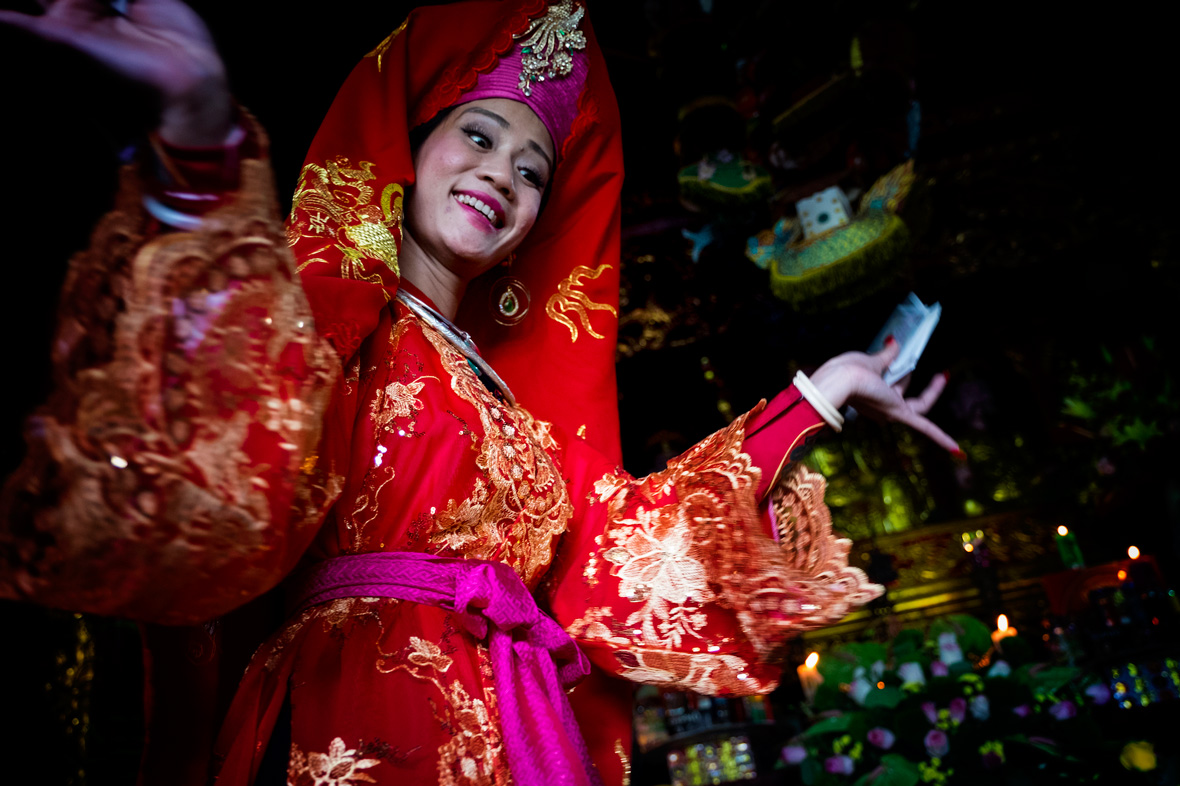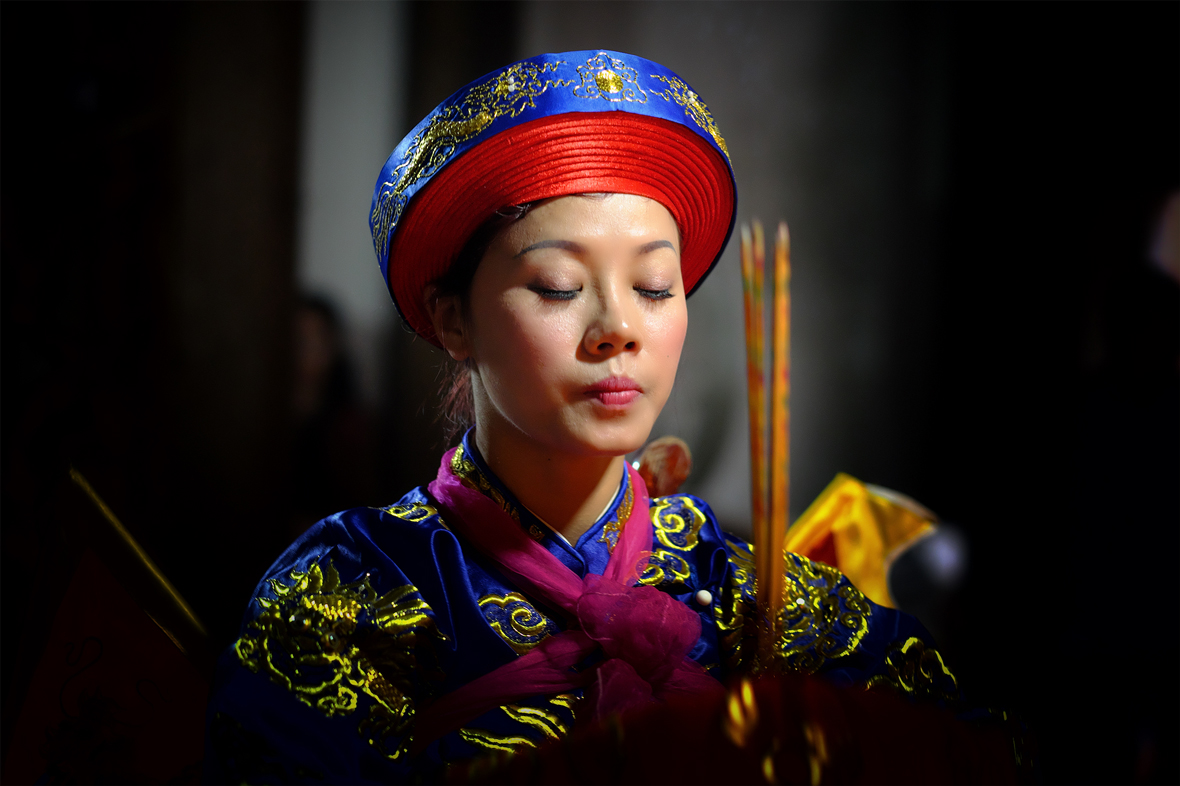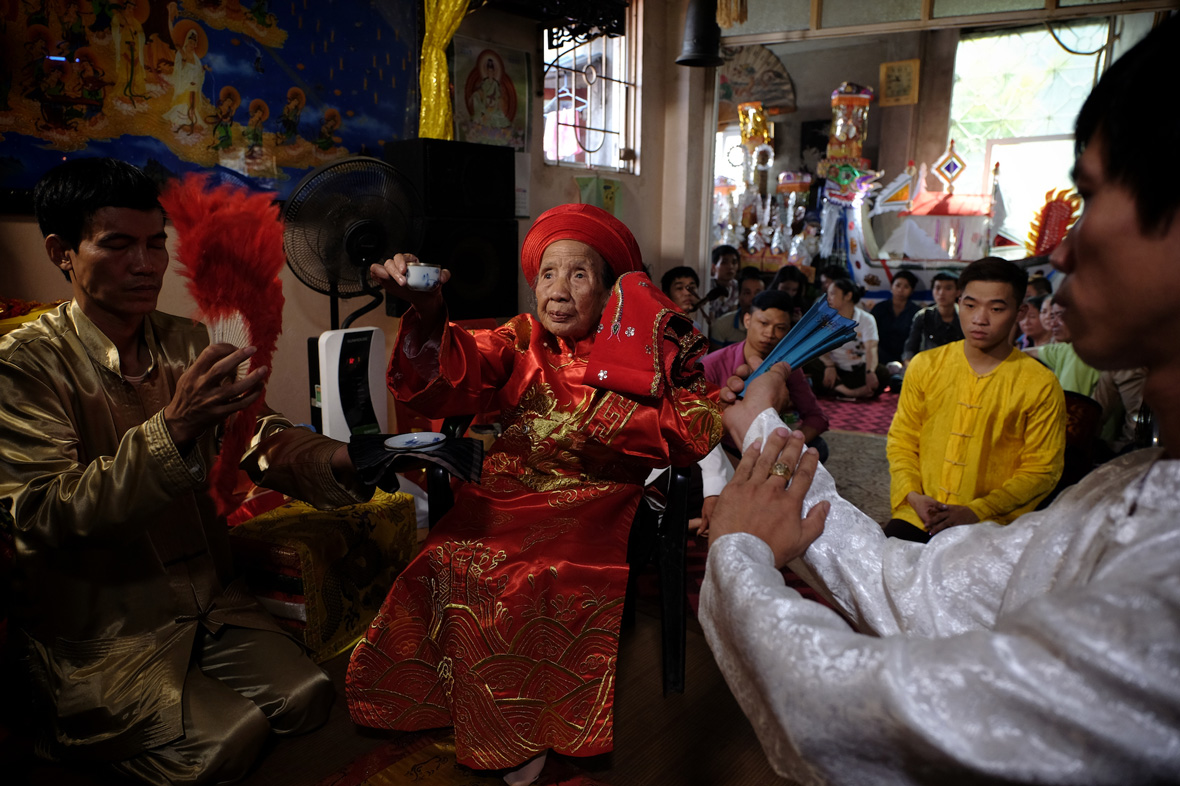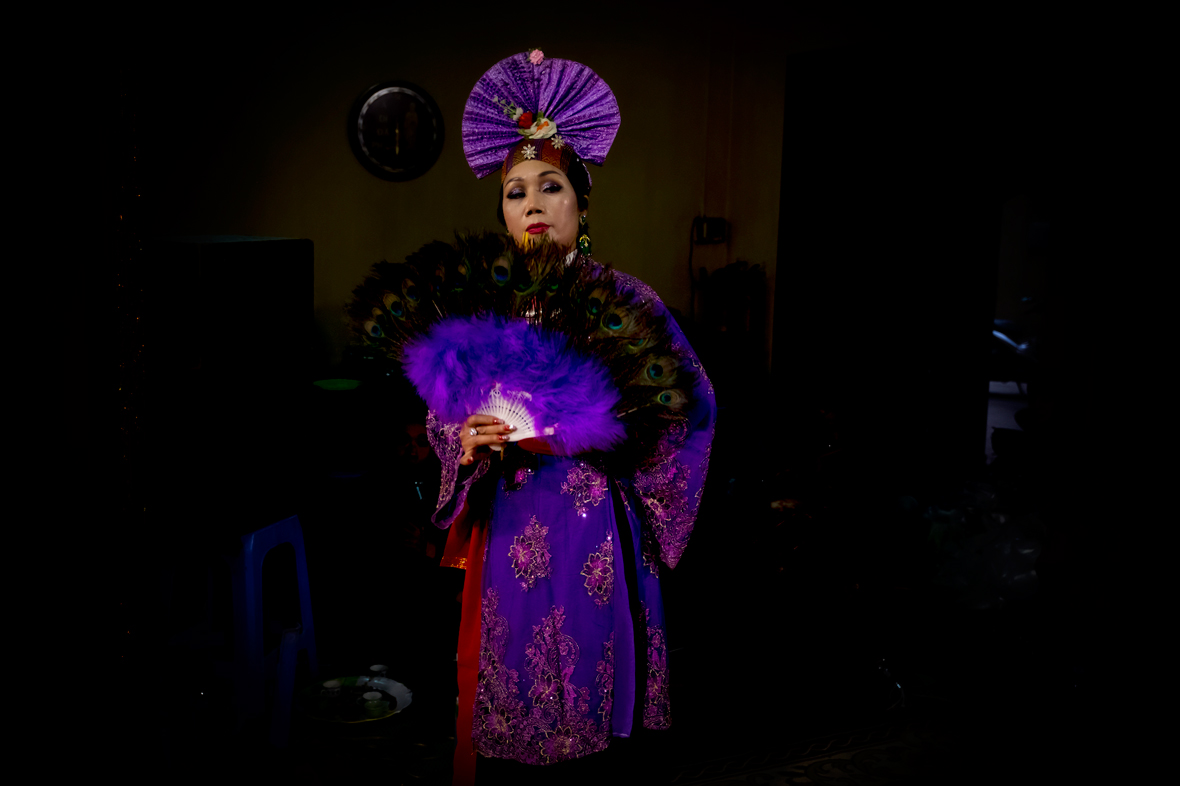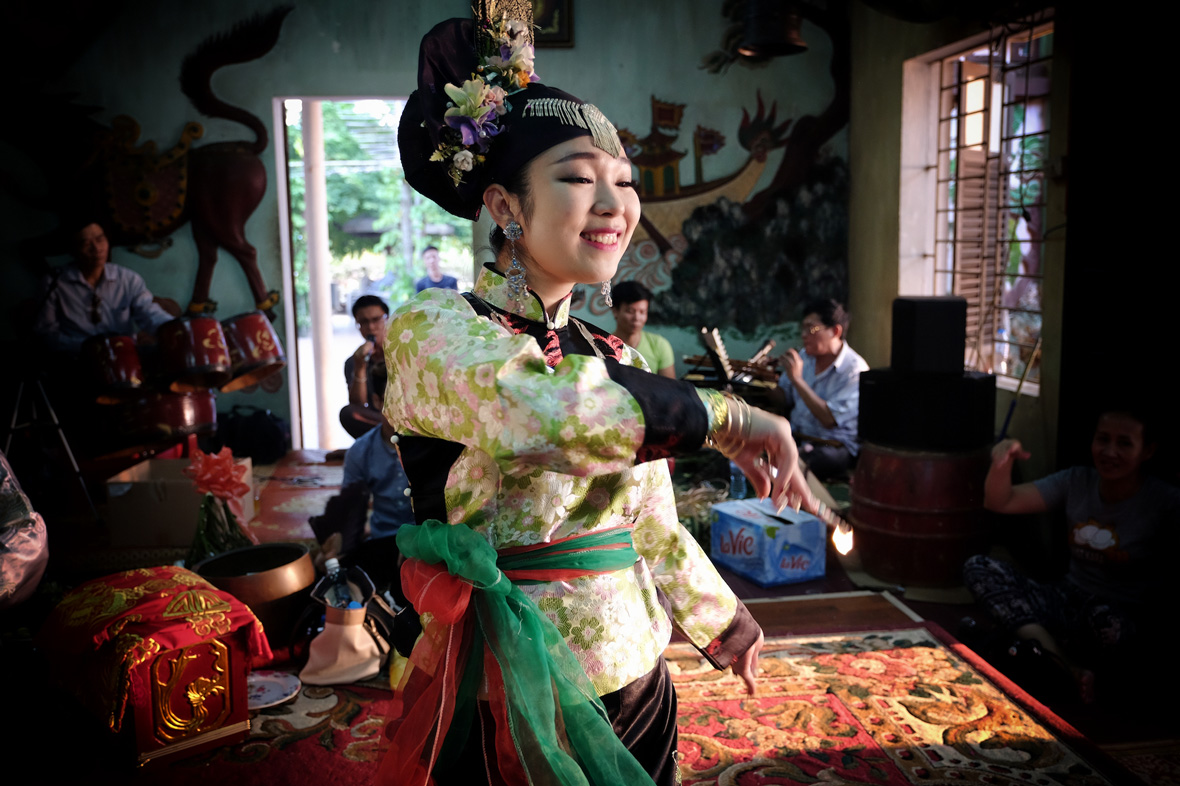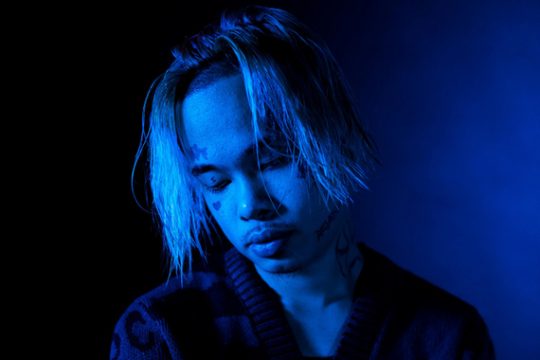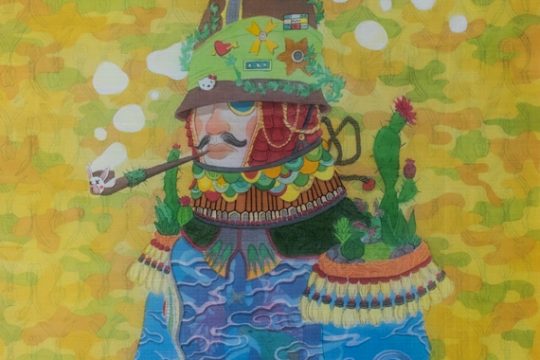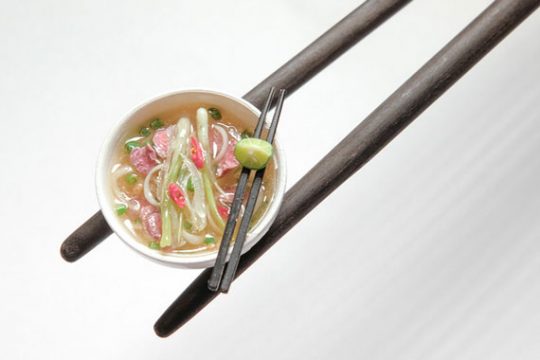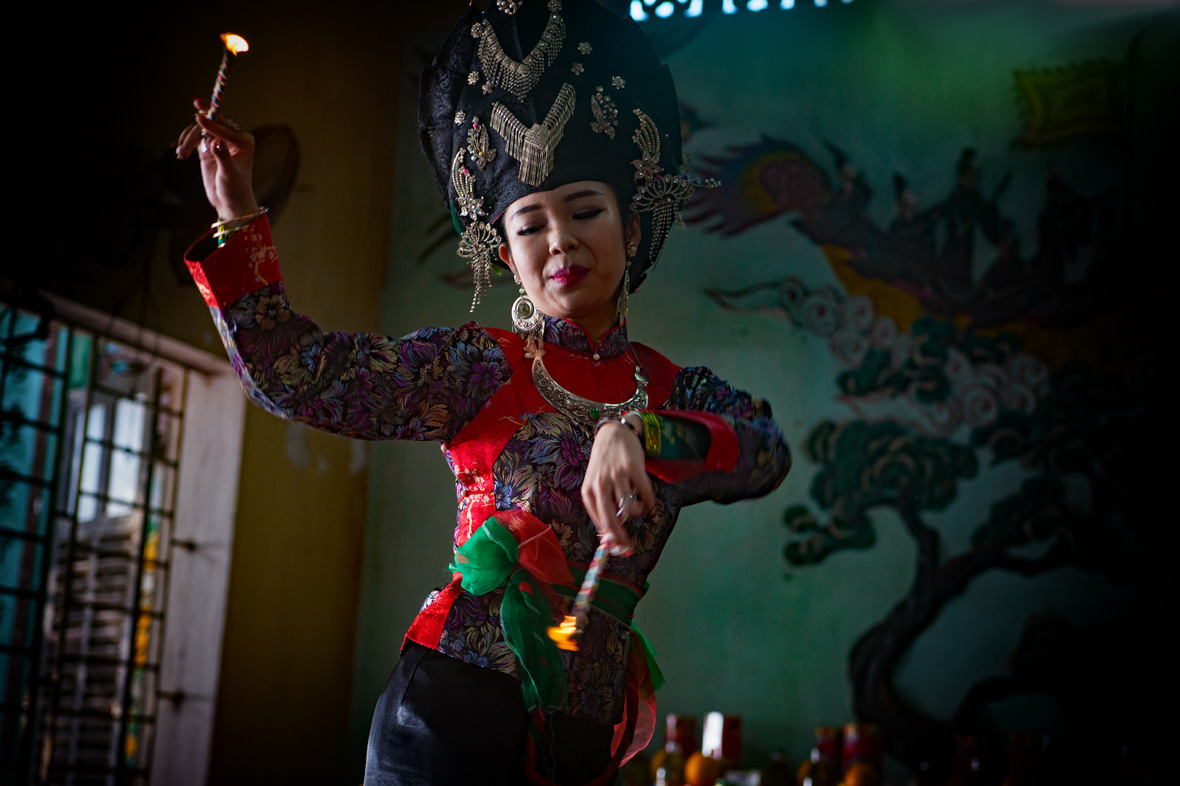
Tewfic El-Sawy’s two-year journey into exploring the world of Đạo Mẫu began serendipitously. Upon hearing religious music wafting from a temple on his visit to Sapa, a town in Northern Vietnam, the photographer discovered this unique religion that’s native to the region.
两年前,Tewfic El-Sawy在拜访越南北部小镇沙巴的时候,偶然听到了一座寺庙中传出的宗教音乐。这开启了他探索道母信仰文化的旅程。那是他第一次接触到越南北部独特的宗教。
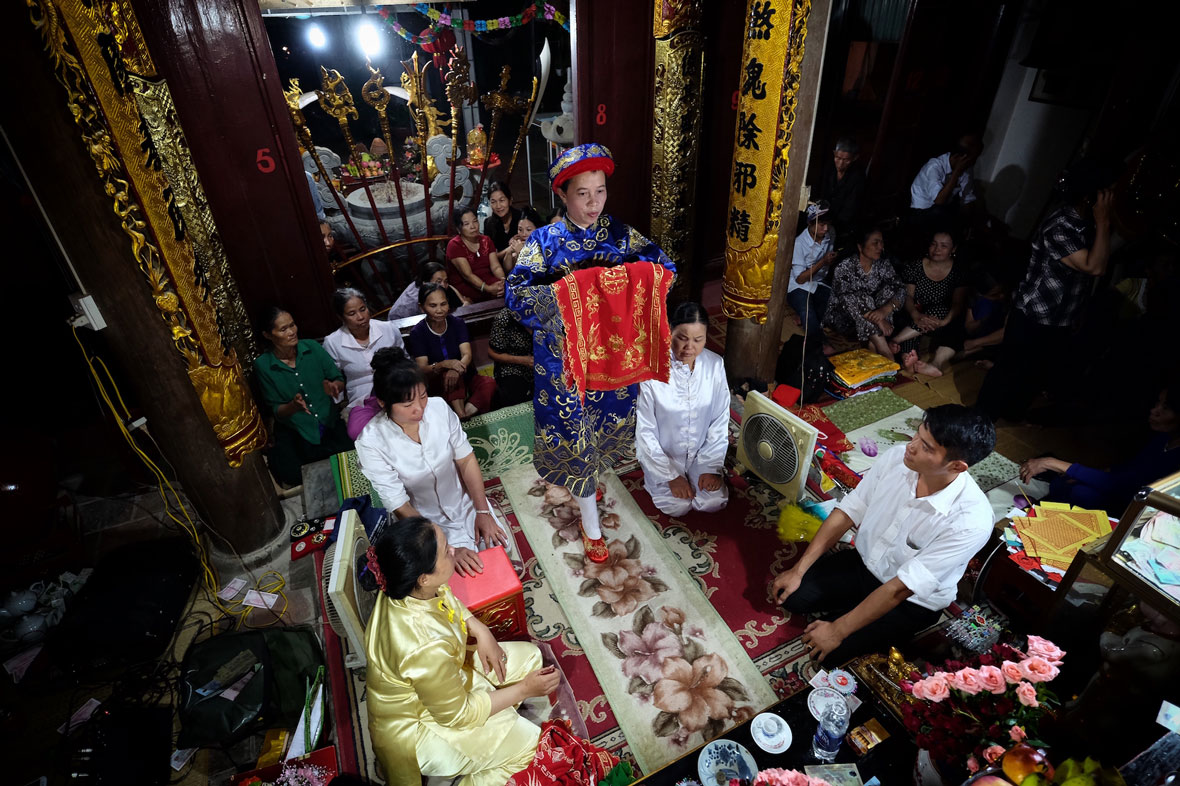
Đạo Mẫu refers to the worship of Vietnamese mother goddesses; the worship of Mẫu (the Mother Goddess) is an important part of Vietnam’s folk culture and identity. Although its historical origins are unclear, scholars believe the religion stems from when Vietnamese would worship nature in hopes of favourable weather, bountiful harvests, and protection from invasions by China and Mongolia.
道母教是人们对越南地母神Mâu 的崇拜,而这种崇拜是越南民俗文化的重要组成部分。虽然它的历史起源并不清楚,但学者相信这种宗教信仰源自于越南人祈愿好天气、丰收和免受中国和蒙古的侵略而崇拜的自然信仰。
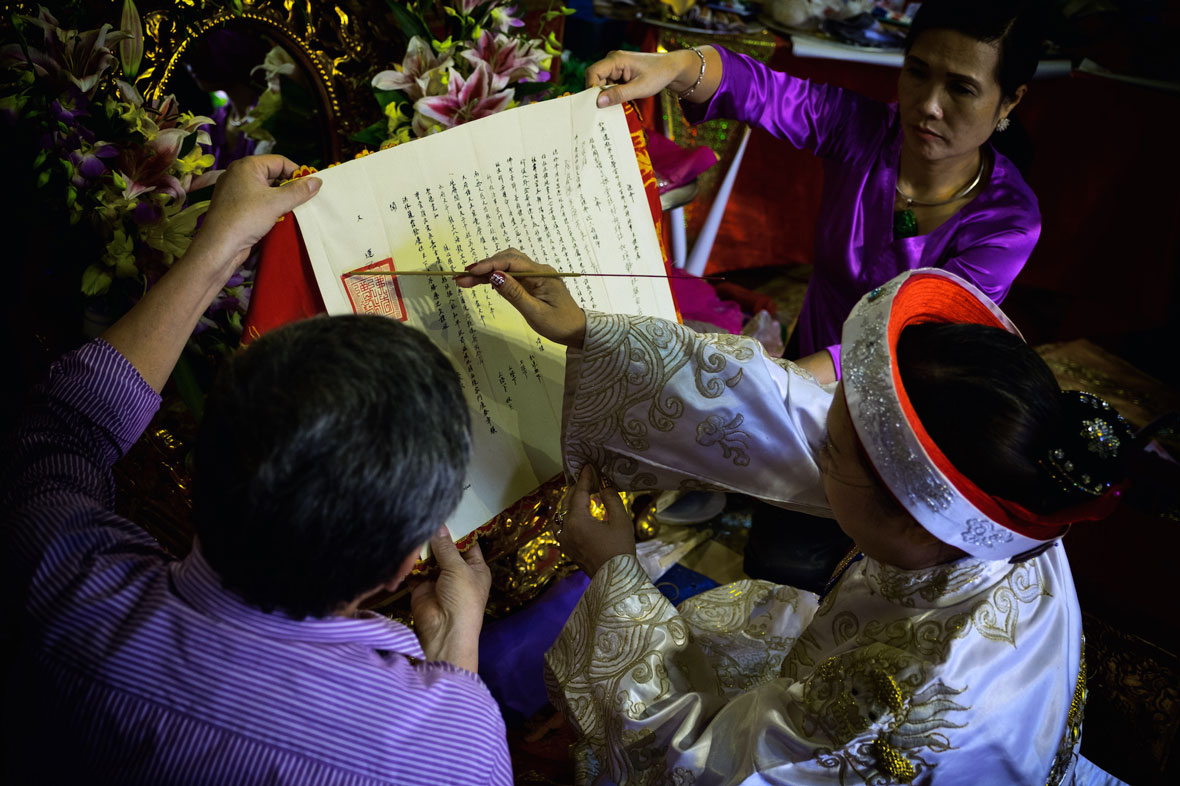
Hầu dồng is one of the primary rituals of Đạo Mẫu and embodies the worship of mother goddesses in Vietnam. It is technically a ritual of spirit mediumship and literally means “receiving the incarnations of spirits” in Vietnamese. Hầu đồng ceremonies involve mediums who host a diverse array of spirits, which include mythical or historical ancestors and illustrious military heroes. The ceremonies involve exotic costumes, music, dance, singing and even acting; invocation music and songs that are known as hát chầu văn aim to induce the mediums into a trance.
Hầu Đồng 是道母教的主要仪式之一,体现了越南文化中对地母神的崇拜。事实上,它是一种精神灵媒的仪式,正如其越南语字面上的意思——接收精神灵魂的化身。Hầu Đồng 的宗教仪式包括一名寄存着不同精神灵魂的灵媒,这些灵魂包括神话或历史上的祖先和杰出的军事英雄。这些仪式融合了各种奇异服饰和音乐,人们还会唱歌跳舞。这种叫做hát chầu văn的祈祷音乐能帮助灵媒进入催眠状态。
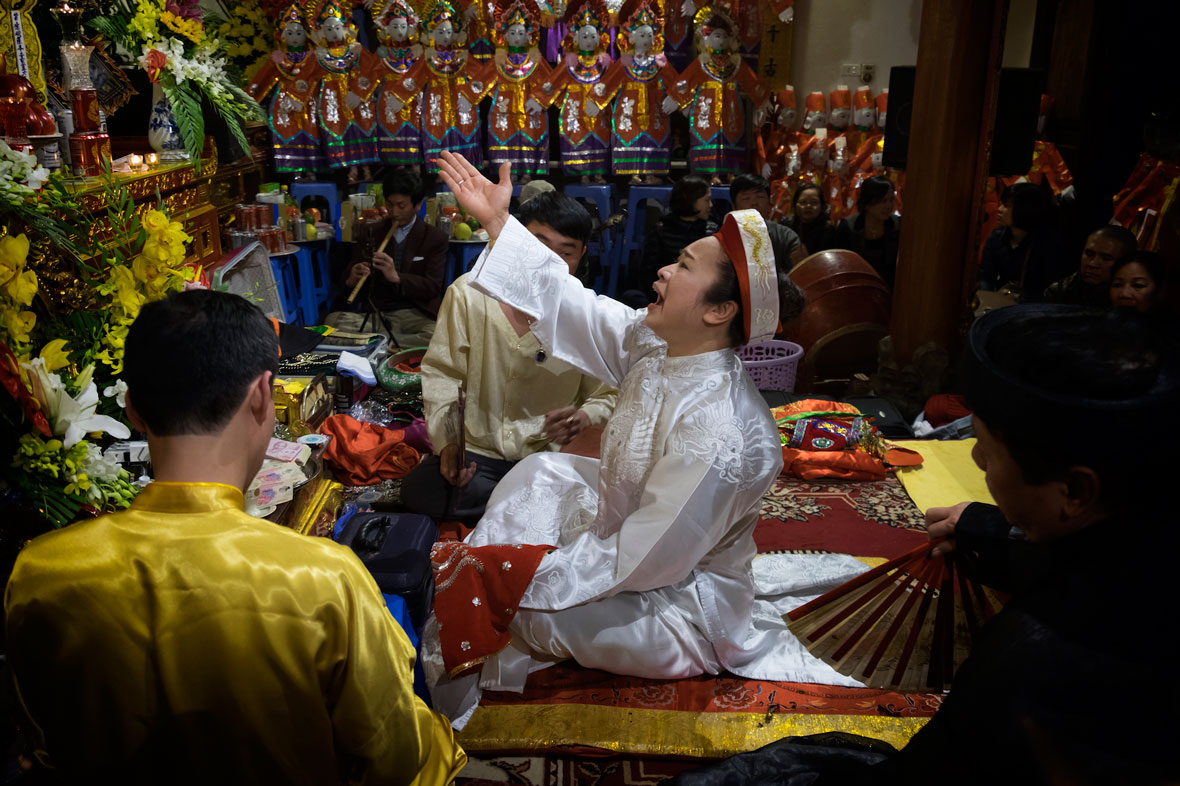
The ceremonies can last anywhere from four to eight hours, taking place in front of the temple’s altar and lead by mediums dressed in white satin. After lighting incenses and chewing on betel leaf wads, mediums close their eyes and sway to the rhythm of the hát chầu văn music. Whilst there are over 70 different spirits in the pantheon of the Mother Goddesses, only 15 are incarnated during the ceremony.
仪式可以持续 10 到 30 分钟,就在寺庙的圣坛前面举行,由穿着白色缎质衣服的灵媒主持。点香、咀嚼槟榔叶后,灵媒会闭上他们的眼睛,身体随chầu văn音乐的节奏摇摆。虽然地母神有超过70位不同的神灵,但其中只有 15 位会出现在仪式上。
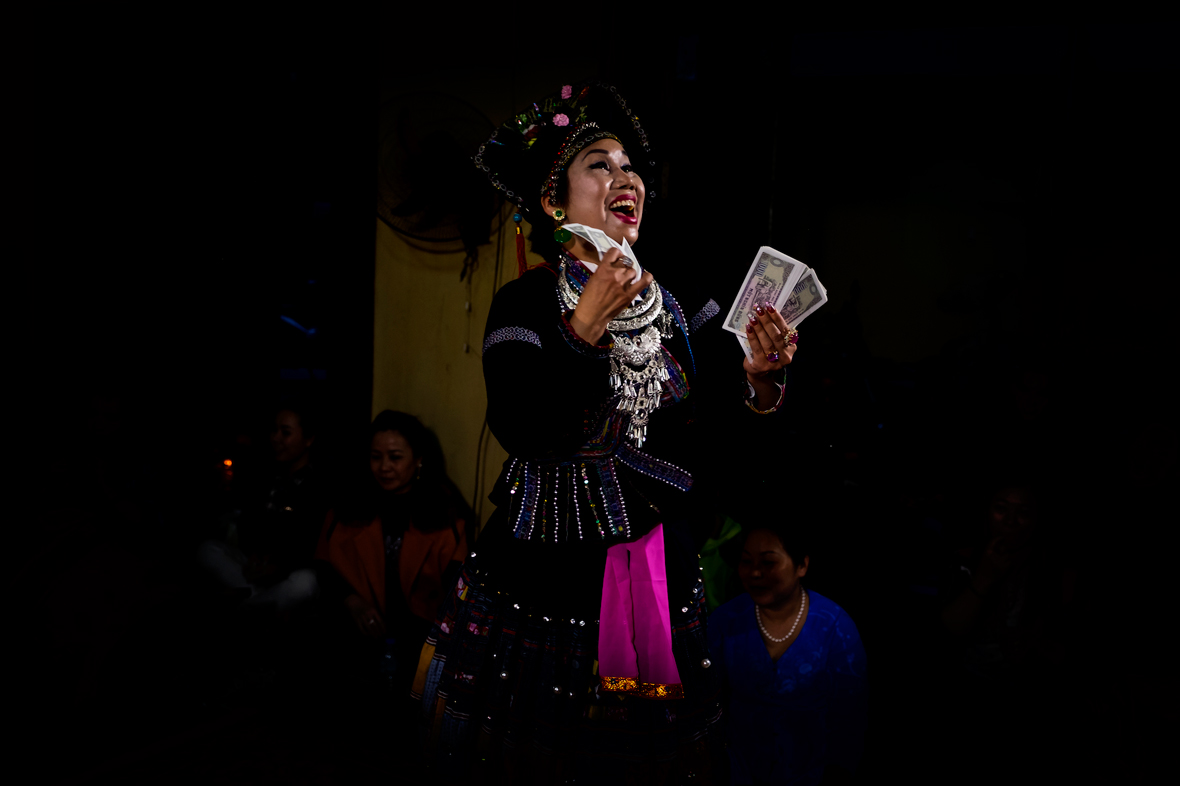
Đạo Mẫu practitioners are primarily women, and the religious rituals play an important role in Vietnamese culture. Beyond providing spiritual comfort, the ceremonies are also a social event for communities. After observing these ceremonies, Tewfic found that Đạo Mẫu was not only an approachable belief system for the local Vietnamese, but also a visual spectacle, engaging participants in fashion, theatre, culture, and sound. Lavish costumes and robes are worn by successful mediums with the belief that these aesthetics will bring about divine favour.
道母教是个母系宗教,其宗教仪式在越南文化中有着重要影响。除了提供精神上的安慰,这些宗教仪式也是人们重要的社交活动。观察完这些仪式后, Tewfic 发现道母教除了是当地人可接触到的信仰体系,也是一种视觉奇观,涉及到时装,剧院,声乐和文化等等。有名的灵媒穿上奢华服饰和长袍,因为他们相信这些美丽的外衣将帮助他们获得神灵的偏爱。
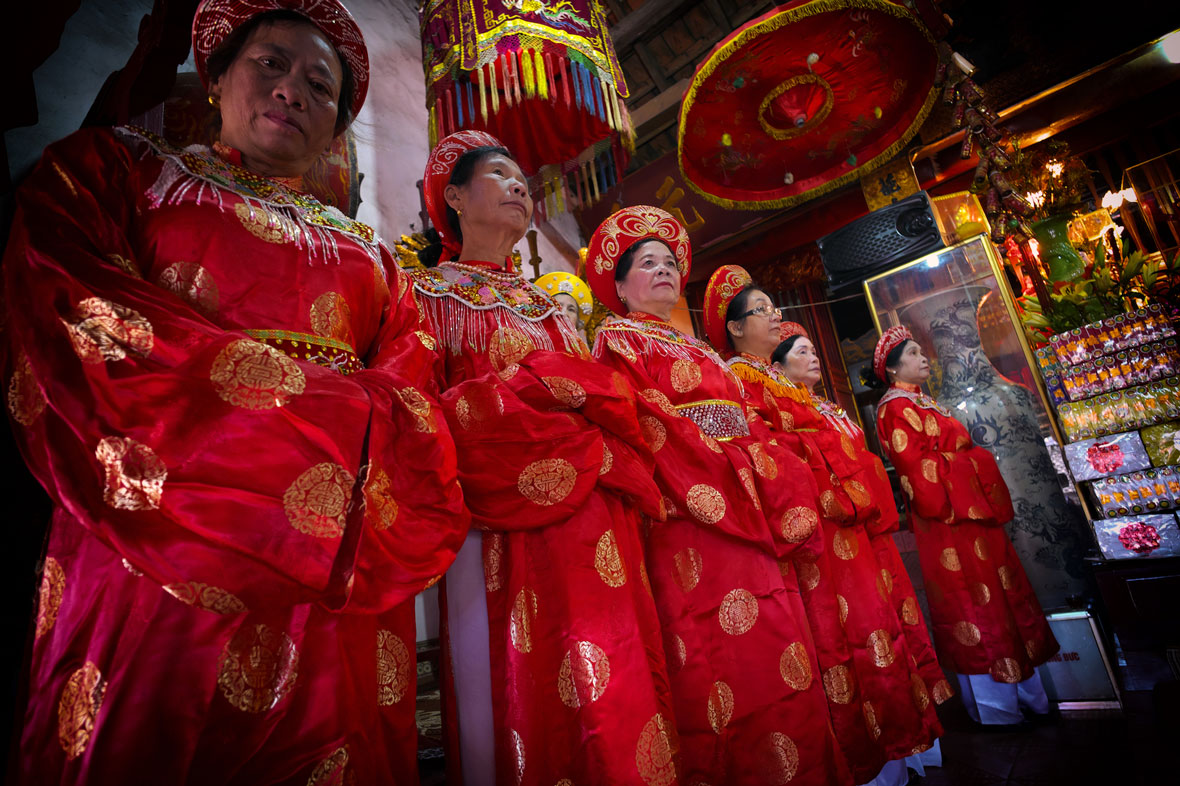
“The religion is not concerned with life after death, but with life now,” Tewfic explains. “It is the ‘now’ and not the ‘later’ concept that attracts many Vietnamese to this indigenous religion, as it speaks to their hopes for success, health, material benefits and luck during their lifetime.”
“宗教并非与死后的生活相关,而是与现在的生活相关。正是这种‘现时’非‘死后’的概念吸引了很多越南人加入这种本土宗教,因为它反映出人们在一生中对成功、健康、物质利益和运气的向往。”
As a fitting epilogue to Tewfic’s time in Vietnam and to the delight of many Vietnamese, on December 1st, 2016, UNESCO immortalised Đạo Mẫu by listing the practice on its Representative List of the Intangible Cultural Heritage of Humanity.
从2016年12月1日起,国际教科文组织将道母教列为人类非物质文化遗产,这对越南人们来说无疑是一个大好的消息,也是Tewfic这趟越南之旅的理想结尾。
